This load wizard facilitates the task of placing snow loads on members and surfaces of the model in compliance with standards.
Main
The Main tab manages the geometry parameters of the roof.
Roof Type
Two basic roof shapes are available for selection in the list:
- Flat/Monopitch Roof
- Duopitch Roof
Define the boundary of the roof plane by clicking the four or six corner nodes of the plane(s) one after the other in the work window. To do so, use this button:
![]() .
.
Set Loaded Roof
The table provides an overview of the properties of the roof plane(s). For a duopitch roof, both roof pitches are set. If necessary, you can use the check boxes to exclude a roof side from the load assignment.
Generated on Members/Surfaces/Lines Nos.
This dialog section shows the members, surfaces, and lines that get a proportional snow load. The entries in the "Loaded" column are available once the snow load has been generated from the complete data using the
![]() button.
button.
To exclude certain members, surfaces, or lines from the load transfer, click into a field of the "Without Load" column. Click the
![]() button to select the objects in the work window that are load-free, such as bracings or purlins. You can also specify a template member or line that runs parallel to the unloaded members or lines. This way, you do not need to select the objects individually.
button to select the objects in the work window that are load-free, such as bracings or purlins. You can also specify a template member or line that runs parallel to the unloaded members or lines. This way, you do not need to select the objects individually.
Parameters
In the Parameters tab, you can define the load parameters and consider special boundary conditions for the generation.
Definition
If you have adopted the location from the online map in the "Model Parameters" tab of the "Base Data" dialog box, the "Map and parameters" definition type is preset. The snow load is determined automatically. You can also use the
![]() button to open the snow load map in this tab.
button to open the snow load map in this tab.
The "User-defined" definition type allows you to manually define the snow load zone, the ground elevation, and the value of the characteristic snow load.
Parameters
If the "Load zone" (for the German National Annex) is not entered automatically, you can select it in the list. The entries are aligned with the standard that you have defined in the Standards I tab of the Base Data dialog box.
The "Altitude" is usually preset from the model parameters, but can also be defined manually. It affects the characteristic value of the snow load.
Snow Load
The characteristic value of the snow load sk on the ground at the structure is preset from the geographical data. If you want to change the value, select the "Manual snow load definition" check box.
Coefficients
The "Exposure coefficient" Ce indicates the decrease or increase of the snow load acting on the roof of the building. EN 1991-1-3, Table 5.1 provides recommendations for different topographies.
The temperature coefficient Ct, allows you to take into account reduced snow loads on roofs with higher thermal transmittance.
Load Distribution
Currently, only trapezoidal loads resulting from the load components are generated on members.
Options
You can use the check boxes in this section to control whether additional snow loads, such as the "Snow overhang" on the eaves or loads on a "Snow guard", are taken into account (only for Eurocode).
By selecting the "Lock for new objects" check box, the snow load will only act on the currently available members, surfaces, or lines of the roof plane(s) according to the definition set in the "Main" tab. Objects that you add later in a roof plane do not get any components of the snow load.
The "Consider member eccentricity" option controls whether the snow load acts on the members in the plane without considering eccentricities (default setting). If you activate the check box, the load is not applied to members for which an out-of-plane offset is available.
Using the "Consider section distribution" check box, you can control whether the snow load resulting from a taper definition also acts on the inclined members (default setting). If you select the check box, the snow load is not applied to members in the load plane that have a non-uniform cross-section distribution (see the chapter Section ).
Load Cases
The Load Cases tab controls the load cases where the snow loads are stored.
In the list, enter the load case number(s) for generating the snow loads. Alternative load cases occur when additional snow loads or shape coefficients for snow loads on duopitch roofs apply (see EN 1991-1-3, Figure 5.3). You can create the corresponding load cases using the
![]() button.
button.
Results
In the Results tab, you will find an overview of the parameters used for generating snow loads.
The table shows the "Shape coefficient" μ and the "Snow load" s. In the case of a duopitch roof, you can check the values for each load case and each roof side.
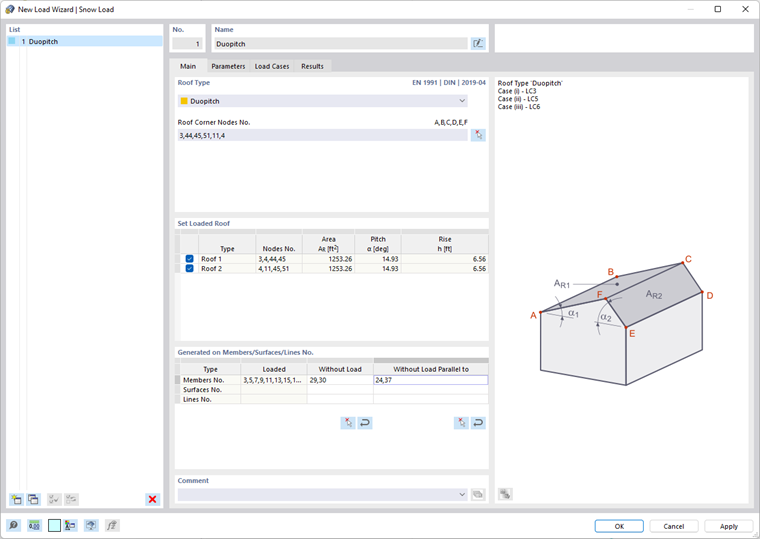
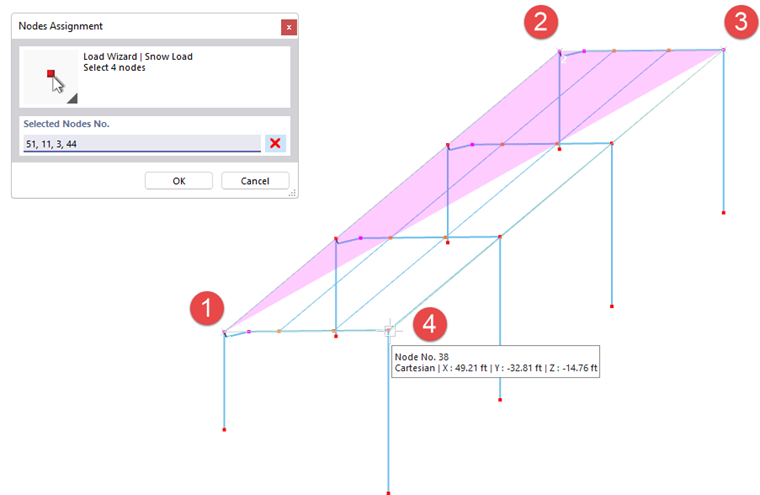
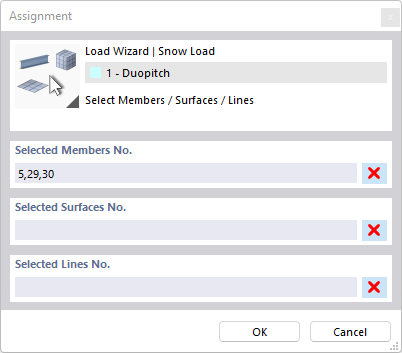
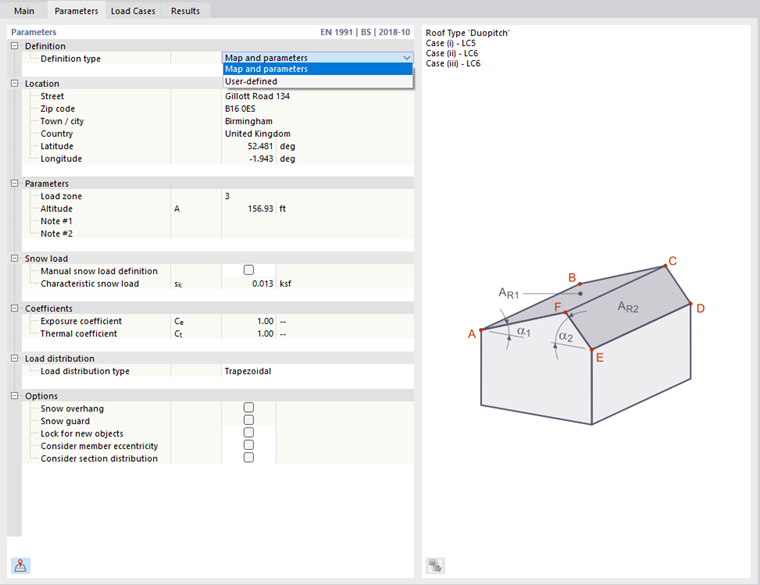
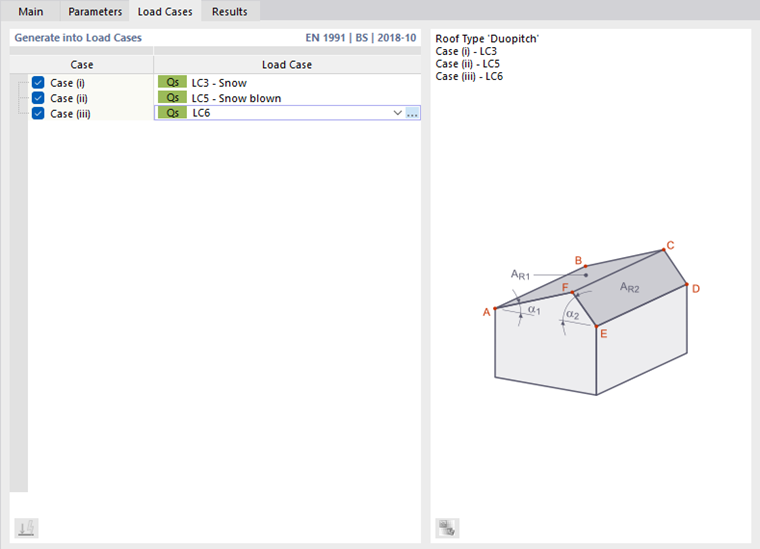
.png?mw=760&hash=d48e0231f870dbde5006d8b4d8c6e14d32797864)

